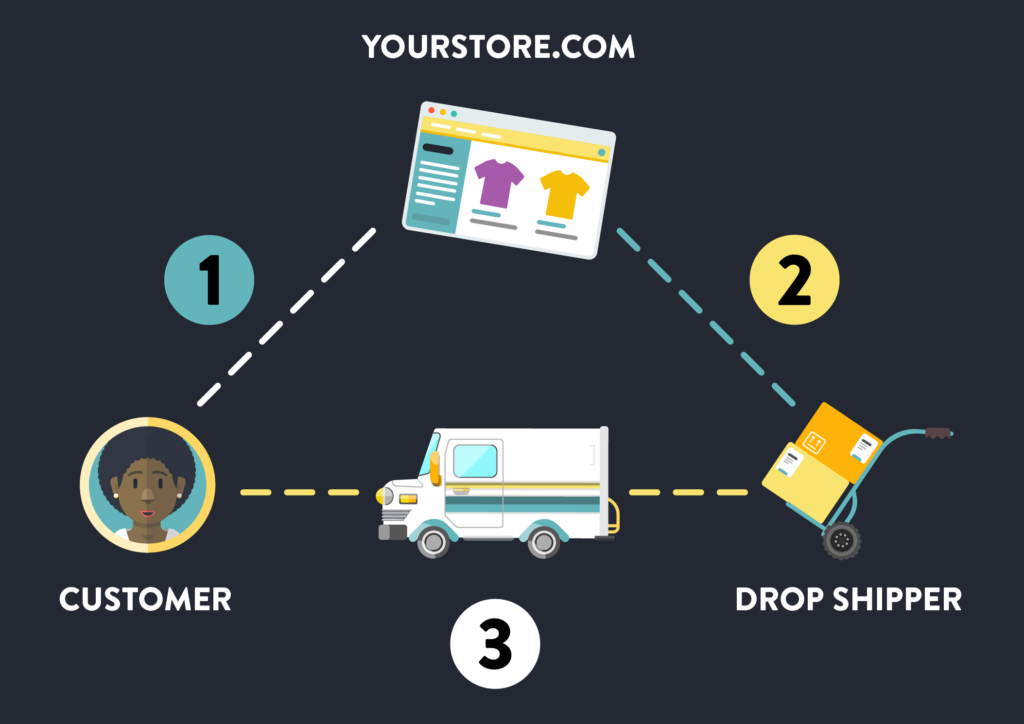What is Dropshipping and How It Works in 2025?
Dropshipping
Dropshipping enables e-commerce businesses to delegate product sourcing, storage, and shipping to third-party suppliers, streamlining fulfillment and reducing overhead.

Exploring Dropshipping: A Guide for E-commerce Entrepreneurs
Drop shipping is a popular fulfillment model that allows entrepreneurs to sell products without the need to stock inventory or handle shipping. With drop shipping, the responsibility of storing, packing, and shipping the products is outsourced to a third-party supplier or manufacturer. This guide will dive into how dropshipping works, its pros and cons, and alternative methods for fulfillment that might suit your business better.
What is the Dropshipping Business Model?
At its core, dropshipping enables e-commerce businesses to offer a wide range of products without having to manage inventory or fulfill orders directly. When a customer places an order, the seller sends the order details to the supplier, who then ships the product directly to the customer.
While it might seem like a simple way to run an e-commerce store, the dropshipping model can come with challenges, particularly in customer experience. Here’s a step-by-step breakdown of how it works:
Customer places an order: The customer buys a product from your online store.
You forward the order to the supplier: As the seller, you send the order information to the dropshipping supplier.
Supplier ships the product: The supplier packages and ships the product directly to the customer.
Customer receives the product: The product arrives at the customer’s doorstep.
This model eliminates the need for large capital investment, warehouse space, or logistics management. However, it also limits your control over key areas like product quality, branding, and shipping timelines.
Key Players in the Dropshipping Process
1. Seller of Record (You)
The seller of record is the business that officially sells the product to the end consumer. You’re responsible for marketing, setting prices, and processing payments. While the supplier handles fulfillment, you retain the legal responsibility for customer service, taxes, and the overall sale.
2. Supplier or Dropshipping Partner
The dropshipping supplier or manufacturer is the business that stocks the inventory and fulfills orders. These suppliers typically have partnerships with e-commerce businesses, handling product sourcing, packing, and shipping.
3. Customer
The end consumer is the person who purchases the product. They expect timely delivery and high-quality service, which is why having a reliable drop shipping partner is critical.
Pros and Cons of Dropshipping
Drop shipping offers several benefits, but it also comes with challenges. Let’s look at both sides:
Benefits of Dropshipping:
Low Overhead Costs: You don’t need to invest in inventory or maintain a warehouse, lowering your business expenses.
No Need for Inventory Management: Since you don’t handle the products yourself, you don’t need to worry about storage or managing stock levels.
Flexibility: You can run your business from virtually anywhere since you don’t need to deal with physical inventory.
Easy to Scale: As your orders increase, your supplier handles the fulfillment, making scaling simpler without the need for extra resources.
Wide Range of Products: You can offer a broad variety of products to your customers without making a large upfront investment in stock.
Drawbacks of Drop shipping:
Lower Profit Margins: Since you’re competing with many other businesses that sell similar products, you may find yourself underpricing to stay competitive, leading to slimmer margins.
Limited Control over Fulfillment: Because the supplier handles the shipping, you have little control over the shipping speed, product quality, or the overall customer experience.
Higher Competition: The low barrier to entry means many businesses are selling similar or identical products, making it hard to stand out.
Inventory Issues: Without real-time inventory tracking, you may sell products that are out of stock, causing delays and customer dissatisfaction.
Customer Service Challenges: If something goes wrong during fulfillment, you’re the one who has to manage customer complaints, even though you weren’t involved in the actual process.
Alternatives to Dropshipping
For businesses that are looking for more control or different fulfillment options, there are a few alternatives to third-party fulfillment worth considering:
1. Third-Party Logistics (3PL)
A 3PL service handles storage, packaging, and shipping for you, similar to drop shipping, but typically with more control over product quality and fulfillment processes. This option is ideal for businesses that want to handle product quality more closely while outsourcing the operational aspects.
2. Print on Demand
If you’re selling custom products like t-shirts, mugs, or other personalized items, print on demand services might be a better fit. Similar to dropshipping, you don’t hold inventory, but you have more control over the customization and branding of your products.
3. In-house Fulfillment
For businesses that are ready to invest in storage and fulfillment, managing your own warehouse and fulfillment process gives you complete control over product quality, inventory levels, and shipping times. While it requires more upfront investment, it can lead to better profit margins and a stronger brand experience.
How to Build a Successful Dropshipping Business
If dropshipping still seems like the right fit for you, here are some key steps to consider when building your business in 2025:
1. Choose Your Niche Carefully
To stand out in a crowded market, find a niche where you can focus your marketing efforts and offer a unique value proposition. Specializing in a specific type of product or market can help you avoid the pitfalls of competing solely on price.
2. Vet Your Suppliers
Not all drop shipping suppliers are created equal. Be sure to research and choose reliable suppliers who offer quality products, fast shipping, and good customer service. Establish strong relationships with your suppliers to ensure smooth operations.
3. Optimize Your Website
A user-friendly website is key to converting visitors into customers. Make sure your site is optimized for speed, mobile use, and search engine visibility. Consider investing in a professional e-commerce platform to handle your orders, payments, and customer data securely.
4. Focus on Marketing and Customer Acquisition
Since dropshipping businesses often struggle with product differentiation, focus on building a strong brand and marketing your business effectively. Invest in SEO, social media marketing, and paid ads to bring in customers and grow your online presence.
5. Streamline Customer Support
Even though you don’t handle fulfillment, customer support is still your responsibility. Ensure you have a clear and effective way of handling inquiries, returns, and complaints to maintain customer satisfaction.
Final Thoughts
While drop shipping offers a simple and cost-effective way to run an e-commerce business, it’s not without its challenges. From intense competition to limited control over fulfillment and product quality, it requires careful planning and management. However, for entrepreneurs looking to test the waters of e-commerce with minimal risk, dropshipping can be an appealing option.
If you’re ready to dive into third-party fulfillment, take the time to select the right niche, build a strong brand, and partner with trusted suppliers. By focusing on what makes your business unique and offering excellent customer service, you can navigate the dropshipping landscape and build a successful online business.



